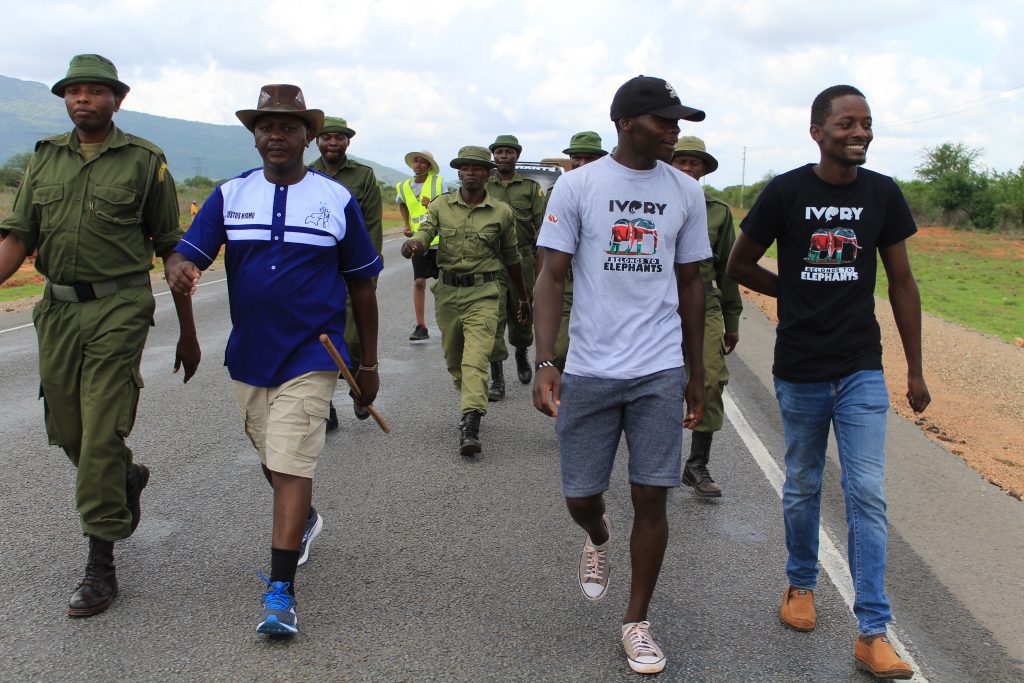What We Do
VISION
Our Vision is to see a Kenya develop into a nation that respects the existence and value of elephants as an important component of our national heritage and economy.
MISSION
Our Mission is to protect the elephant as a species of important national interest by transforming the attitudes of Kenyans at all levels towards environmentally sensitive livelihood.
The Trend
Kenya loses one (1) elephant daily to poaching and over 365 elephants for its tusks (ivory) annually. If this trend continues the national elephant population may decline given that mortality rate was 4% compared to a growth rate of 2% in 2011. Over 80% of Kenya’s elephants are found outside protected areas and the rest in National Parks and Reserves.
Ivory Belongs to Elephants
The Ivory belongs to elephant walk campaign received enormous support from Kenya’s First Lady Margaret Kenyatta, Cabinet Secretary to the Ministry of Environment, water and Natural Resource, KWS and International organizations such as IFAW, WWF among others who walked with Jim separately. Jim has walked over 5001 km now that includes 1050 km in the USA (Boston to DC).
Our Objectives
This campaign walk has three objectives:
(1) Raise awareness on the elephants and Rhino poaching
(2) Engage local communities on how to participate in wildlife conservation programs
(3) Educate communities on the new wildlife Act enacted early this year.


WE HAVE BEEN WORKING HARD TO SAVE THE LIFE OF ELEPHANTS
The elephant population in Kenya as of 1973 was 167, 000. The numbers now stand at 35,500 elephants in Kenya, i.e., as of the year 2021 (Kenya Wildlife Census Report). Elephant poaching in different parts of Kenyan wildlife eco-regions has been an alarming issue, however, instances of prolonged drought periods are now claiming more elephants than poaching. There is a danger of losing elephants through retaliations from communities as a result of farm invasions and lack of timely loss compensations. This nerve-wracking concern will require an urgent approach in wildlife conservation such as opening wildlife migratory routes and corridors.
Elephants are charismatic animals that serve as a reassembling point for conservation, winning global attention and generating momentous returns from wildlife-based tourism. Elephants are also known as keystone species with a meaningful role in ecological dynamics and demonstrating how important they are to the conservation of other biodiversity.
While Kenya has a vast array of biodiversity, the status and trends of all Kenya’s ecosystems shows a general degrading and declining status. Despite the vital role these ecosystems and their wildlife play, their loss and degradation are adversely affecting the country’s economy and community livelihoods. Ecosystems are falling while human-wildlife conflicts are on the rise. The remaining wildlife dispersal and migratory routes need to be assessed and secured to help mitigate human-wildlife conflicts. Additionally, climate change is propelling loss in biodiversity and individuals need to be sensitized on the repercussions of their actions in fueling this global crisis. The ‘Ivory belongs to elephants’ campaign calls for urgent action in mitigating the threats that touch on environment and wildlife.
Elephants Being Killed
We are Lovers of Elephants
Elephant Neighbors Center (ENC) has brought various organizations together to achieve a common goal in biodiversity conservation since the campaign started. ENC among other organizations lobbied the Kenyan government to improve the wildlife penalties from 1 year or a fine of ksh.40,000 to life imprisonment or a fine of 20 million shillings which has now been enacted as a law.
